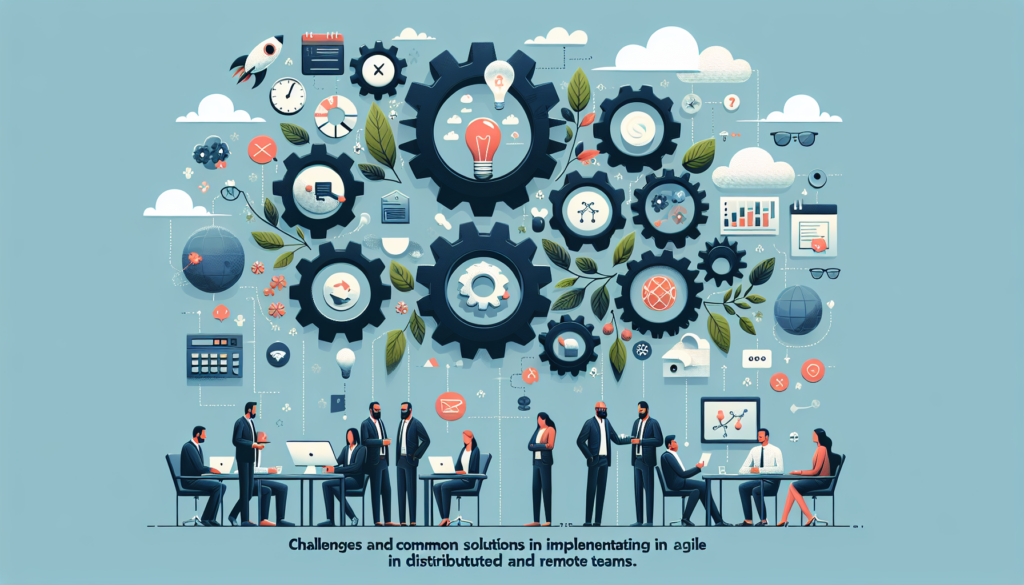The Agile methodology, born from software development and rooted in the principles of the Agile Manifesto, has transformed the way organizations manage projects and teams. It stands out for its adaptability, customer focus, and continuous value delivery. However, distributed and remote teams face unique challenges when adopting these practices due to the added complexity in communication and coordination. This article will explore in-depth how these challenges can be addressed and overcome with effective solutions, incorporating case studies from organizations that have successfully implemented Agile in such environments.
Analysis of Challenges in Distributed and Remote Teams
Effective communication: Without face-to-face interaction, the risk of misunderstandings increases. Asynchronous communication can delay decision-making and group discussions.
Time management and time zones: Geographically dispersed teams face the challenge of working in different time zones, which can hinder synchronous meetings and real-time collaboration.
Culture and team cohesion: Establishing a shared culture and maintaining team cohesion is more complex at a distance, which can lead to feelings of isolation and disconnection among members.
Work tracking and productivity: Monitoring progress and ensuring productivity requires setting up tracking systems adapted to the non-presential nature of the team.
Tools and technology: The selection and implementation of the right tools are critical to support Agile practices and ensure effective collaboration among team members.
Strategies to Overcome Challenges in Agile Practice
Effective synchronous and asynchronous communication: The key is to balance these two types of communication. Tools like Slack can be used for asynchronous communication, while synchronous communication is effective through video conferences on platforms like Zoom or Teams, setting aside specific times for full team meetings that maximize participation across all time zones.
Time zone-aware time management practices: Planning key activities for when there is the most overlap in team members’ working hours can result in higher levels of collaboration.
Cultivating culture and cohesion: Build an effective team culture through virtual events, regular integration, and team-building activities aimed at strengthening the relationship between remote workers.
Adapted metrics and tracking for remote Agile: Implement dashboards and work tracking tools like JIRA or Trello, allowing teams to follow task progress and quickly adapt to changes.
Proper technology selection and training: Choose technologies that are team-friendly and provide the necessary training for their optimal use, focusing on tools that support Agile methodologies such as continuous integration and deployment (CI/CD).
Case Studies and Best Practices
IBM: In their transition to distributed teams, IBM applied a core team with satellite strategy. They maintained small teams in different locations to ensure that collaboration and communication were maintained as if it were a single team.
Automattic: The company behind WordPress.com has shown a successful model with a fully remote workforce. One of their approaches has been the emphasis on clear and concise asynchronous communication, with a culture of extensive documentation of processes and procedures.
GitLab: With one of the most extensive remote work handbooks, GitLab has created an environment where all decisions and communications are transparent and accessible to all team members, regardless of their location.
Projection to Future Innovations
Artificial intelligence and machine learning are emerging as potential tools to improve collaboration in distributed teams. The automation of common coordination tasks and the provision of insights based on team performance and collaboration could be key areas of future innovation.
Finally, evaluating Agile practices in remote and distributed teams requires a detailed understanding of remote work dynamics, as well as the application of technological solutions and management strategies focused on. Continuous improvement, adaptability, and the incorporation of real case studies strengthen an organization’s ability to implement Agile successfully in these complex environments. With a focus on solving specific problems and a commitment to communication and transparency, distributed and remote teams can not only adopt Agile but turn it into an engine of productivity and job satisfaction.

